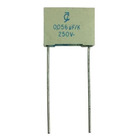

Linearly polarized light can be decomposed into two counter-rotating circular eigenmodes of equal amplitude. Over a century ago, Lord Rayleigh described a one-way transmission system based on the mechanism of Faraday rotation 1. Field–matter interactions with media subjected to magnetic fields can exhibit breaking of such symmetry. In other words, the reflected polarized beams retrieve their original polarization states as they travel back through the same birefringent medium. They come at the core of many complex devices like filters, delay lines, modulators, isolators, switches and circulators.Īlthough a transparent birefringent crystal (that is, a crystal whose refractive index varies with both the light polarization and the direction of propagation) naturally induces a phase shift between the two distinct field components, this linear field–matter interaction is, by definition, reciprocal. Phase retarders (PRs), that is, devices that induce a phase shift on the transmitted or reflected wave, are fundamental parts of any communication or electromagnetic processing system. However, having control over the phase has always been quite important. While a general non-vacuum material is an electromagnetic reflective/absorptive attenuator by nature, its phase transfer function is normally quite hard to manipulate. This in turn enables the design of a stand-alone complete terahertz isolator without resorting to an external magnetic field bias, as opposed to all the optical isolators realized so far. The exploited medium allows a broadband rotation, up to 194°/T, obtained using a SrFe 12O 19 terahertz-transparent permanent magnet. Here we demonstrate a non-reciprocal terahertz Faraday isolator, operating on a bandwidth exceeding one decade of frequency, a necessary requirement to achieve isolation with the (few-cycle) pulses generated by broadband sources. A common isolator variant, the circulator, is widely used to obtain a complete separation between forward- and backward-propagating waves, thus enabling the realization of a desired transfer function in reflection only. It is required to shield electromagnetic sources against the effect of back-reflected light, as well as to limit the detrimental effect of back-propagating spontaneous emissions. A Faraday isolator is an electromagnetic non-reciprocal device, a key element in photonics.


 0 kommentar(er)
0 kommentar(er)
